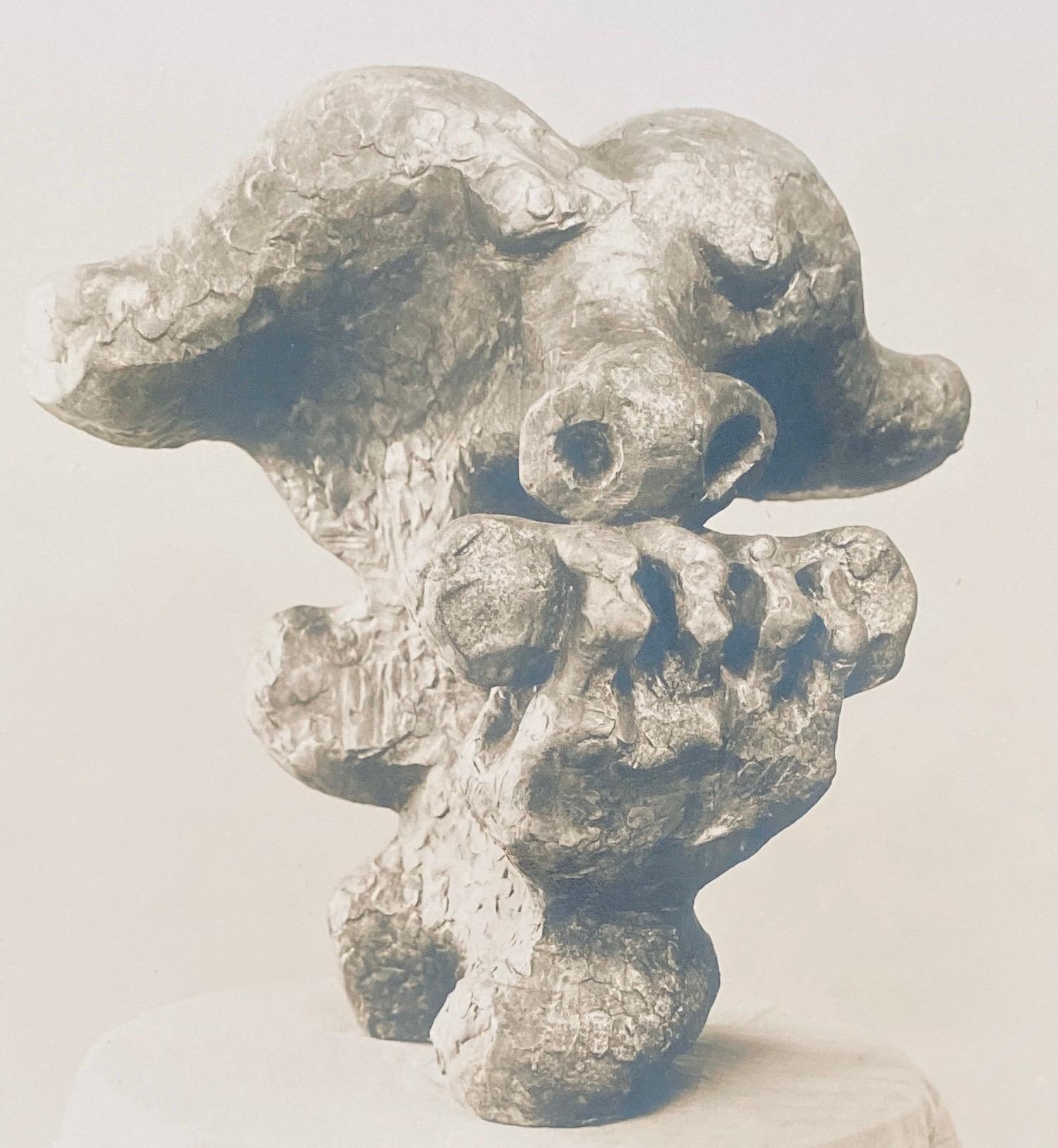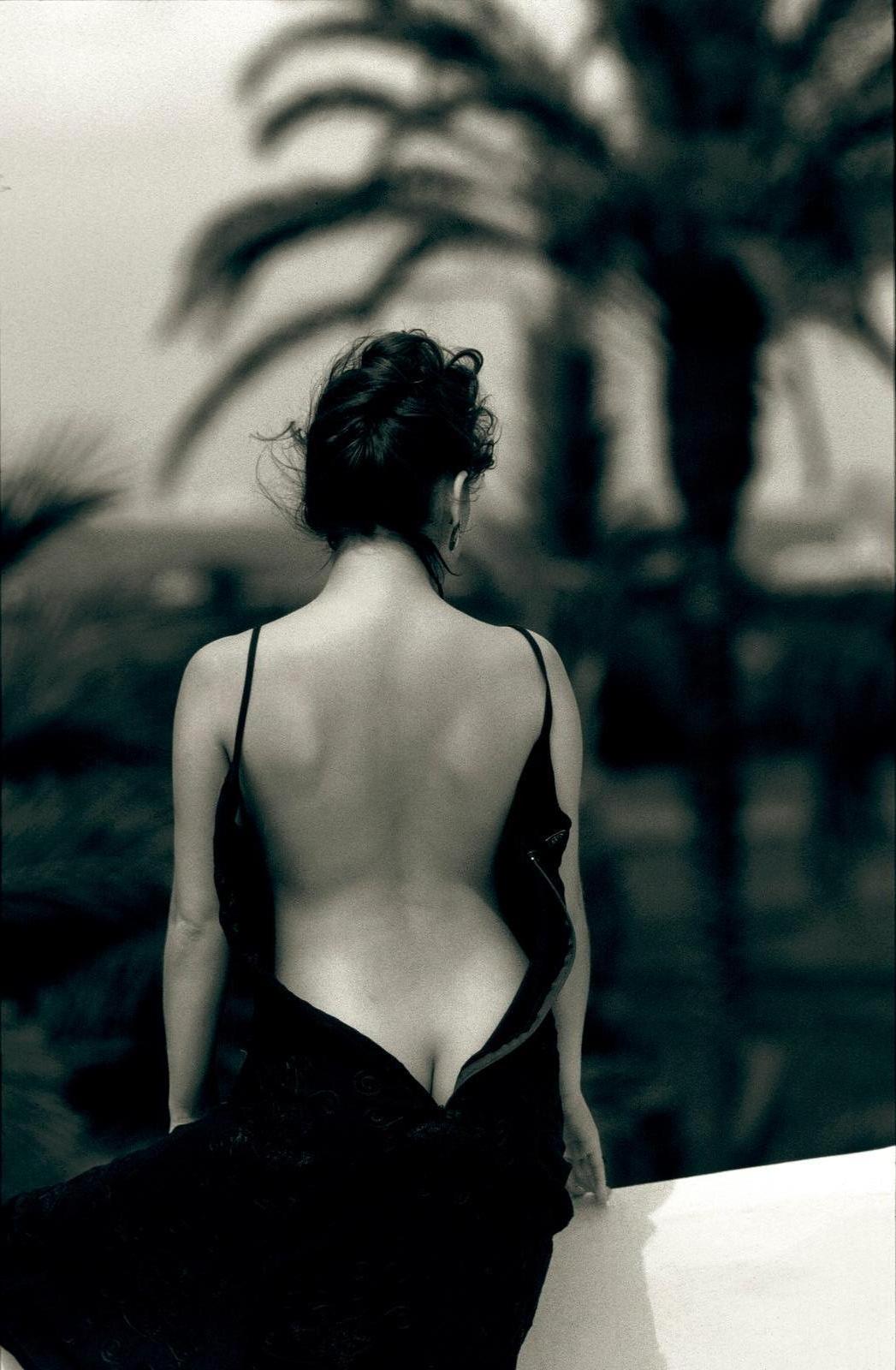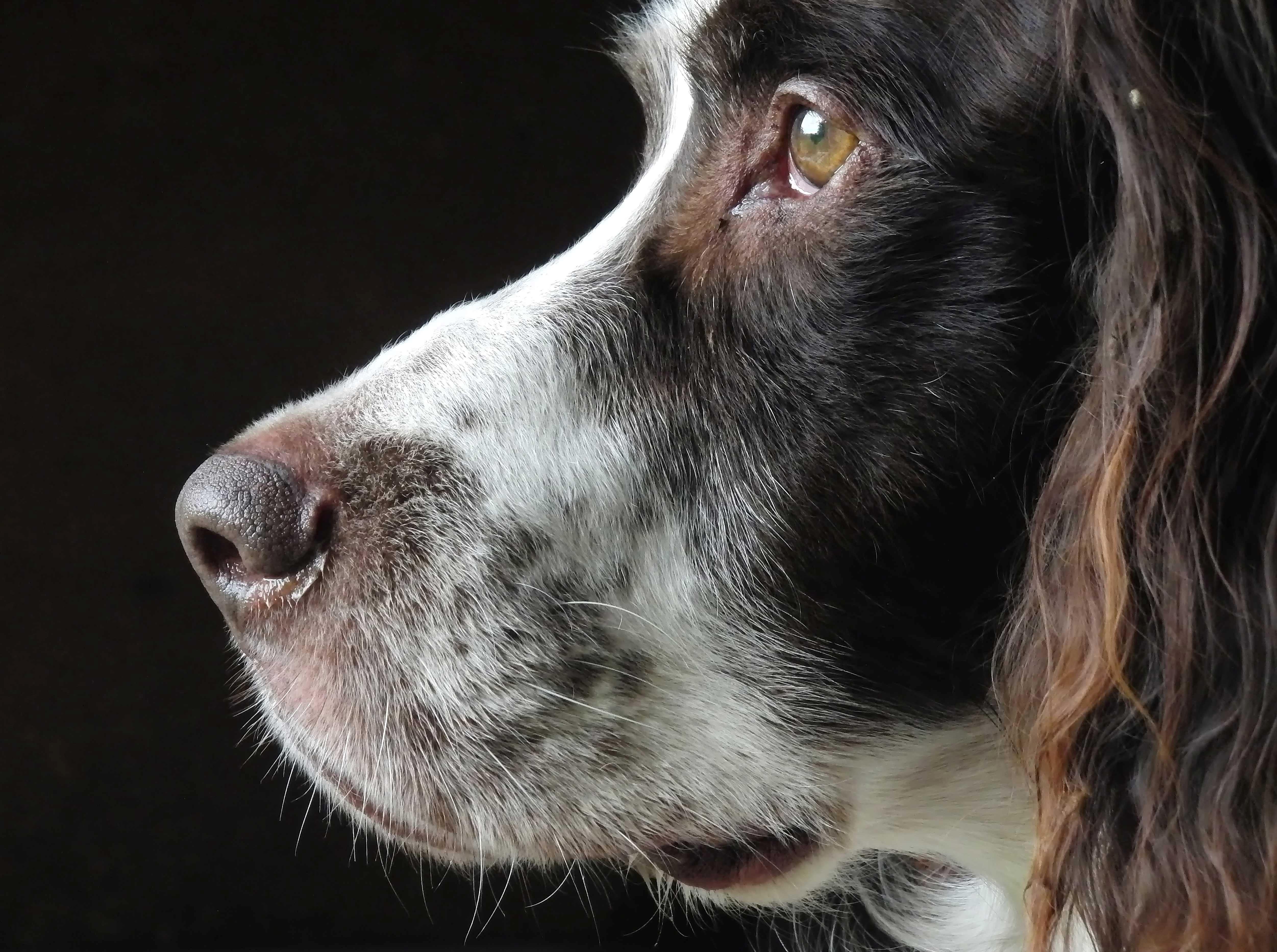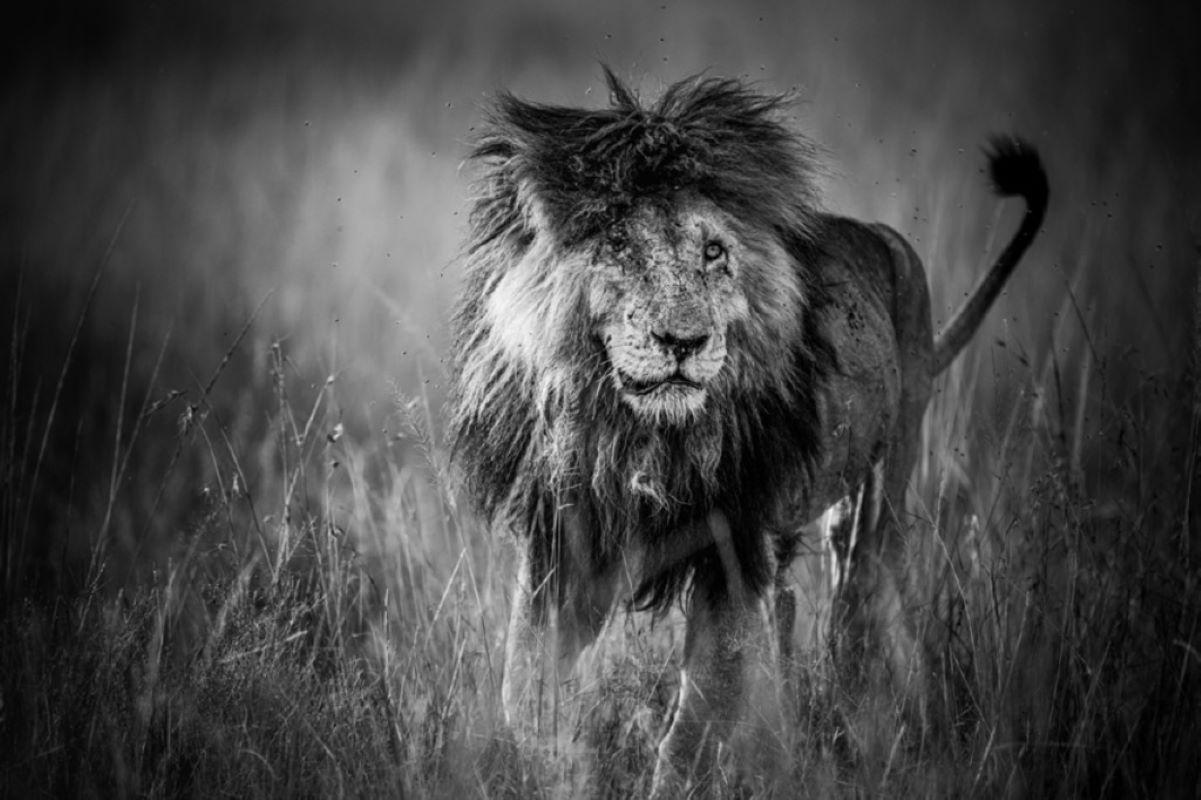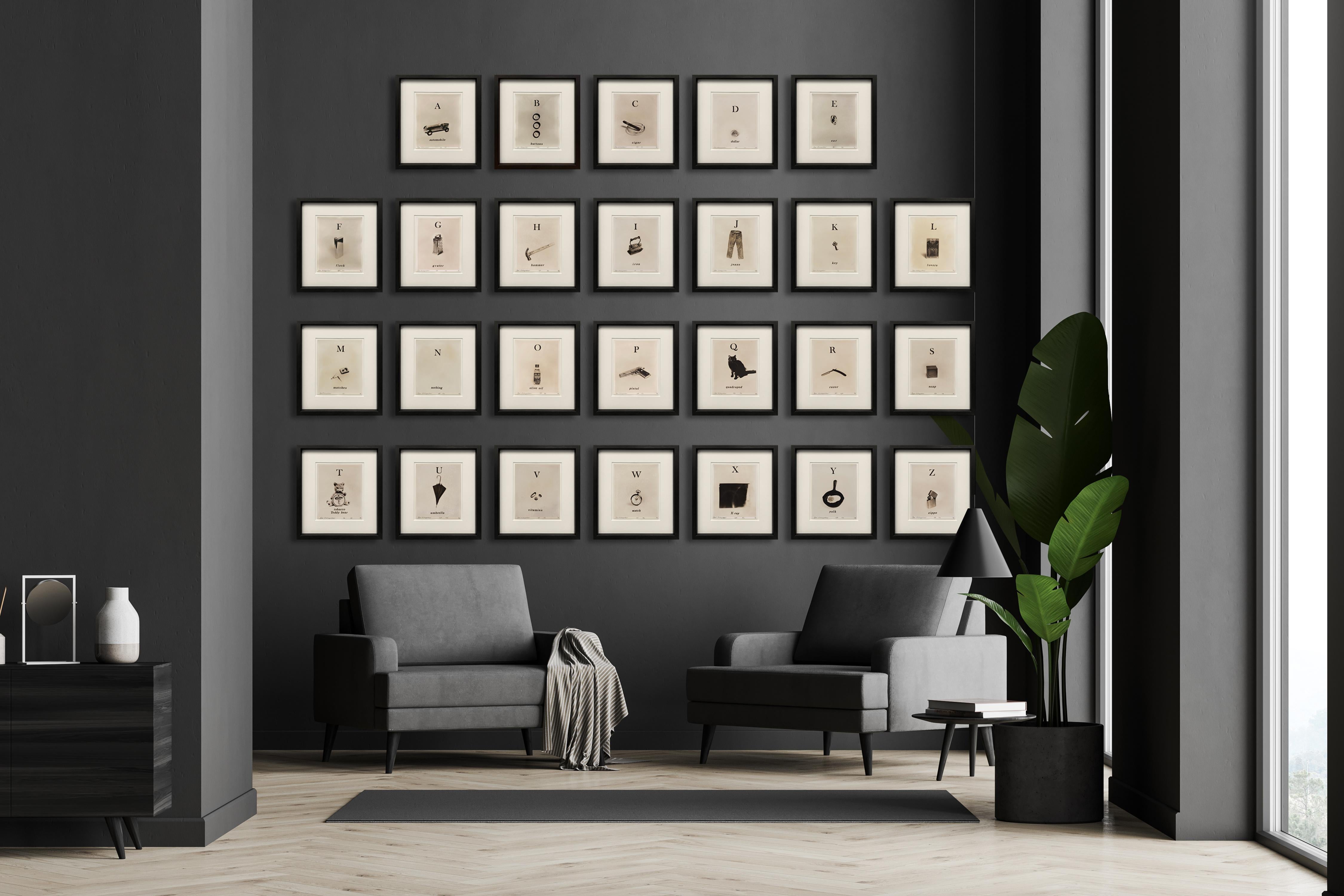Items Similar to Rare Harry Bowers Vintage C Print Photograph From Ten Photographs Fashion Photo
Want more images or videos?
Request additional images or videos from the seller
Harry BowersRare Harry Bowers Vintage C Print Photograph From Ten Photographs Fashion Photo1984
1984
About the Item
HARRY BOWERS
T E N P H O T O G R A P H S
I DON'T LOOK FOR PHOTOGRAPHS I INVENT THEM
I recall my first meeting with Harry Bowers in California a few years ago. As he produced his large-scale prints, I was at first flabbergasted, not only by their size, but by their seamless perfection. Technique appeared to be everything but then technique as technique simply vanished. After the first moment, technique was no longer an issue, but rather a passageway to the imagery.
Suffice it to say about Harry Bowers' working style that he is an obsessive man. Trained as an engineer, he has turned that discipline to art. His lenses, equipment and darkroom, much of it exactingly manufactured by himself to answer certain needs, serve the desire of the artist to take photographic technique to its ultimate perfection in invisibility and transparency. I respect obsession in art, and particularly in photography, because obsession in photography passes beyond the easy, middle ground of image making to a more demanding, more difficult, yet more rewarding end. Bowers' obsession is to eliminate "photography as technique." No grain, no decisive moments, no journalism, or, seemingly, direct autobiographical endeavors appear in his work.
Bowers is an artist of synthesis who controls his environment if only in the studio exactly to his liking. The images he creates are formal structures, saucy stories on occasion, which may offer hints of a darker, more frightening sexuality, but what you see is the end product of an experiment in which nothing save the original insight perhaps is left to chance.
We seem fascinated with the idea of replication of reality in art. Popular painting frequently reproduces a scene "with the accuracy of a photograph," and photographs may "make you feel as though you were right there." The very invisibility of the photographic medium is important to Bowers, in that it allows him to maneuver his subject matter without concern for rendering it in an obvious art medium which would interfere with the nature of the materials he uses. The formal subtleties of Bowers' recent work are as delicious and ambiguous in their interrelationships as the best Cubist collages, yet while those collages always suggest their parts through edge and texture, these photographs present a structure through a surface purity.
Bowers' earlier works, for example, the Skirts I Have Known series, were formed of bits of clothing belonging to Bowers and his wife or found at local thrift shops. These works fused an elegance of pattern and texture, reminiscent of Miriam Shapiro's or Lucas Samaras' fabric paintings, with a sense of theater and, on occasion, high eroticism. These clothes are not simply mashed like baled rags into the glass fronted box which fronts the picture plane, but are actors in a subtle dumb show. Early on, Bowers was surprised that so few people took notice of the erotic element in his work, for it forms a distinct and important component of his images, and one which he has continued to exploit, albeit in different ways.
In the last few years Bowers' work has divided into two parallel modes; one continues his fascination with patterns, textures and stuffs pressed into the transparent picture plane, while the other is more directly anthropomorphic. In this second body of work, Bowers frequently uses articulated shadow figures in black or white, carefully adjusted within the image in a provocative way that is often sexually unsettling. But for all their explicit arrangement, these works may be less suggestive than his earlier clothing tableaus. These newer works are more about space, texture, and the extensions of photography, as well as being a comment on sexuality.
Bowers has always been fascinated with space, and recognizing that it cannot be rendered on a flat surface through the camera, he has set about to create an illusion of space on a shallow plane, a true trompe l'oeil achievement. Within these works, the space is still constructed upon the glass panel of the printing frame, but with elements collaged to its front surface as well as pressed within it. The forms, frequently large black and white photographs (a photographer's conceit on the use of photography), often include a seated or crouching figure dressed only in socks and cutoff dungarees, which add an element of personality. The figure and the way in which it is posed also add a quality of vulnerability to his images, not heretofore seen.
One of the best of these images, HB-28-80, uses a photograph of a figure crouching in a fetal position on a chair. The figure has been cut from its background, and the background, in turn, has been taped to the front of the glass pane while the figure, in perfect register with the background, is laminated behind the glass. One of Bowers' articulated shadow figures, one hand trying to hide its genitals, has been placed on top of the figure, also under the plane of glass. The shadow figure follows the curve of the spine of the photographed figure. One cannot help but feel not only the nakedness and tense embarrassment of these two figures, one real and the other schematic, but the anomalous suggestion of a man carrying a fetus within his body.
Bowers' images extend their power in several ways. They are photographs, which are so pure in their technique as to be clear as water. They deal with precise replications of reality, but a reality which has been recontextualized into episodes of both formal and visceral ambiguity. The best of them are wonderful .. contrivances" -his word-and are as frightening in their psychological implications as they are elegant in their visual form.
Thomas H. Garver, Director Madison Art Center
- Creator:Harry Bowers (1938, American)
- Creation Year:1984
- Dimensions:Height: 20 in (50.8 cm)Width: 16 in (40.64 cm)
- Medium:
- Period:
- Condition:
- Gallery Location:Surfside, FL
- Reference Number:1stDibs: LU38210681202
About the Seller
4.9
Platinum Seller
These expertly vetted sellers are 1stDibs' most experienced sellers and are rated highest by our customers.
Established in 1995
1stDibs seller since 2014
1,549 sales on 1stDibs
Typical response time: 1 hour
- ShippingRetrieving quote...Ships From: Surfside, FL
- Return PolicyA return for this item may be initiated within 3 days of delivery.
More From This SellerView All
- Vintage Silver Gelatin Photograph Jacques Lipchitz Bronze Sculpture Photo SignedBy Adolph StudlyLocated in Surfside, FLAdolph Studly, Swiss born American photographer. His work is kept in the Photographic Archive at The Museum of Modern Art Archives, New York. He was known for his gallery photographs of works by artists represented primarily by the Buchholz gallery, Curt Valentin, and Stephen Radich Galleries. Artists whose work he shot include Max Beckmann, Francis Bacon, Chaim Soutine, Allan Kaprow, Clyfford Still, Georges Braque, Paul Klee, Henri Matisse, Picasso, Auguste Rodin, Georges Rouault. He worked with Louis H. Dreyer, the pre-eminent architecture photographer in New York City. Chaim Jacob Lipchitz, 1891-1973, was born in Lithuania and came of age in Paris during the early 20th century, where he was active in the avante-garde community of Pablo Picasso, Amedeo Modigliani, Diego Rivera, Chaim Soutine, and Juan Gris. Art historian H. H. Arnason, who ranked Lipchitz with Picasso and Marc Chagall, wrote, "Lipchitz, as a pure sculptor, is ...unquestionably one of the greatest sculptors of this century." The architect Philip Johnson asked Lipchitz to make a wall sculpture to be placed on the brick chimney over a fireplace of a guest house owned by Mrs. John D. Rockefeller III on West 53rd Street in New York. Lipchitz decided to develop the piece from his Pegasus designs and call it Birth of the Muses in honor of the Rockefellers' interest in the arts. In 1950 he completed the work as a bronze relief five feet high. It was installed as planned and later was acquired by Lincoln Center. He participated in the Flight portfolio...Category
1940s Modern Abstract Photography
MaterialsPhotographic Paper, Silver Gelatin
- K-Narf Color Photo Graffiti, Adhesive Tape Altered Street Art Photograph CollageBy K-NarfLocated in Surfside, FLK-narf, French (b. 1970) Collage photo artwork (Graffiti Vans) (2011) Tape-o-graph photography Signed lower right, numbered 1/5 16 x 12 7/8 inches K-NARF was born in 1970 in Saint-Etienne, France and now lives in Tokyo. K-NARF invented PHOTOGRAFFITI a contemporary way of making street photography that lead him to develop his singular Tape-o-Graphy technique. It involves the application of adhesive tape strips on developed photographs in order to manually process the photographs giving them a unique surface texture and extraordinary appearance. Open to influences from street art and video, he uses the medium of photography as a toy to create and play. Both conceptual and experimental, definitely non-conventional, his work documents, recycles and collects the visual anachronisms of a world in a perpetual mutation. Through the years, K-narf often got support from key figures of the art world such as Teruo Kurosaki (Idee, Tokyo), Rotraut and Daniel Klein-Moquay (Yves Klein Estate), Joel Meyerowitz (pioneer of contemporary color photography), Jacques Attali (French writer), Olivier Gay (Architect & Art collector) and Yoichi Nakamuta (curator & Art producer). He collaborates on regular basic with...Category
Early 2000s Street Art Color Photography
MaterialsAdhesive, Tape, Mixed Media, Photographic Paper
- K-Narf Color Photo Graffiti, Adhesive Tape Altered Street Art Photograph CollageBy K-NarfLocated in Surfside, FLK-narf, French (b. 1970) Collage photo artwork (Graffiti Vans) (2011) Tape-o-graph photography Signed lower right, numbered 1/5 16 x 12 7/8 inches K-NARF was born in 1970 in Saint-Etienne, France and now lives in Tokyo. K-NARF invented PHOTOGRAFFITI a contemporary way of making street photography that lead him to develop his singular Tape-o-Graphy technique. It involves the application of adhesive tape strips on developed photographs in order to manually process the photographs giving them a unique surface texture and extraordinary appearance. Open to influences from street art and video, he uses the medium of photography as a toy to create and play. Both conceptual and experimental, definitely non-conventional, his work documents, recycles and collects the visual anachronisms of a world in a perpetual mutation. Through the years, K-narf often got support from key figures of the art world such as Teruo Kurosaki (Idee, Tokyo), Rotraut and Daniel Klein-Moquay (Yves Klein Estate), Joel Meyerowitz (pioneer of contemporary color photography), Jacques Attali (French writer), Olivier Gay (Architect & Art collector) and Yoichi Nakamuta (curator & Art producer). He collaborates on regular basic with...Category
Early 2000s Street Art Color Photography
MaterialsAdhesive, Tape, Mixed Media, Photographic Paper
- Large Michal Rovner Photograph, Photo Print on Paper Israeli MasterBy Michal RovnerLocated in Surfside, FLHand signed, numbered and dated. the edition is marked PP 1/3 and dated 2002. This is a Photograph printed on a rag type paper with text in body. I believe this piece relates to t...Category
Early 2000s Black and White Photography
MaterialsPhotographic Paper
- Untitled from the Dysmorphologies Series Abstract Large Color PhotographBy Ken Gonzales-DayLocated in Surfside, FLThis large montage of photographs (is not mounted onto aluminum) from Ken Gonzales-Day's dysmorphologies series. Fujifilm Fuji Color Crystal Archive paper color Photo paper. This is not signed or numbered. Ken Gonzales-Day's interdisciplinary and conceptually grounded projects consider the history of photography, the construction of race, and the limits of representational systems ranging from the lynching photograph to museum display. The Searching for California Hang Trees series offered a critical look at the legacies of landscape photography in the West while his most recent project considers the sculptural depiction of race. Profiled began as an exploration of the influence of eighteenth century "scientific" thought on twenty-first century institutions ranging from the museum to the prison and extended to the sculpture and portrait bust collections of several major museums including: The J. Paul Getty Museum; The Field Museum, Chicago; The Museum of Man, San Diego; L'École des beaux-arts,Paris. The Bode Museum, Berlin, Park Sanssouci, Potsdam; The National Museum of Natural History, Paris; The Yale Center for British Art, New Haven; among others. Gonzales-Day lives in Los Angeles and is Chair of the Art Department at Scripps College. Much of Gonzales-Day's work considers the larger political and social representational histories of the Mexican-American experience. His early work draws on the constructed photo methods of artists like Jeff Wall, Cindy Sherman, or Gregory Crewdson. For example, in Bone Grass Boy (1996), Gonzales-Day casts himself as all the central characters in a staged photonovella set during the Mexican American War...Category
20th Century Contemporary Abstract Photography
MaterialsMetal
- Vintage Color Photograph 'Hiding, Tokyo, Japan' 4 Photo Quadriptych Signed Ed.6By Skip ArnoldLocated in Surfside, FLC-print on pearlescent paper. It is dated 96-99. This is the AP print. The edition called for 6. (not 99 as has been recorded elsewhere) it is signed and dated. Skip Arnold was born...Category
1990s Performance Nude Photography
MaterialsPhotographic Paper, C Print
You May Also Like
- Lisa -Signed limited edition portrait art print, Black white photo, Woman, SensualBy Ian SandersonLocated in Barcelona, BarcelonaLisa - Edition : 1/5 signed + numbered by artist with certificate of authenticity, unframed Please note. There are three sizes of this archival pigment print; each is an edition o...Category
1990s Contemporary Black and White Photography
MaterialsArchival Paper, Black and White, Archival Pigment, Photographic Film, Gi...
- "Phalco's Look” Spaniel, Romantic Dog Photograph with beveled plexiglass frameLocated in Charleston, USAlain Foussier, born in France living in the Netherlands, perfects the mood and spirit of Spaniel dogs with his portrait photography. His Spaniel dog a...Category
2010s Romantic Color Photography
MaterialsPhotographic Paper
- Lila and Sam from the movie Stay with Ewan McGregor, Naomi WattsBy Stefanie SchneiderLocated in Morongo Valley, CAA piece of art from the movie 'Stay' by Stefanie Schneider Stefanie created the art for both main actors Naomi Watts and Ryan Gosling in the movie 'Stay' directed by Marc Forster. S...Category
Early 2000s Contemporary Color Photography
MaterialsArchival Paper, Photographic Paper, C Print, Color, Polaroid
- ScarfaceLocated in New York, NYInspired by her love for nature, Griet Van Malderen (Belgium, 1970), a self-taught wildlife photographer from Flanders in Belgium, has been exploring Africa’s wild places for the pas...Category
2010s Contemporary Black and White Photography
MaterialsPhotographic Film, Photographic Paper, Pigment, Archival Pigment, Digita...
- Individually framed Alphabet Suite, Edition 3/10, hand signed and numbered.By Igor VishnyakovLocated in New York, NYIgor Vishnyakof limited edition (3/10) individually framed hand gold glazed sepia photographs. All pieces are hand signed and numbered by the artist. This installation was featured...Category
1990s Contemporary Figurative Prints
MaterialsPhotographic Paper, Archival Pigment
- Smokers At Closing TimeBy Maria PassarottiLocated in New York, NYDigital chromogenic print from negative, edition 1/5, framedCategory
21st Century and Contemporary Contemporary Color Photography
MaterialsColor, Photographic Paper, C Print
Recently Viewed
View AllMore Ways To Browse
Photographs Of People
Photographs Space
Ten Vintage
California Photograph
Vintage Style Photographs
Photographs Directors
Very Large Photograph
Vintage Looking Photographs
Size Ten
Photograph 1980
Set Of Photographs Framed
Photograph 1989
Photograph Of H
Plane Photograph
Suggestive Art
Train Photograph
Lessing Photographs
Photographs Of Theaters
